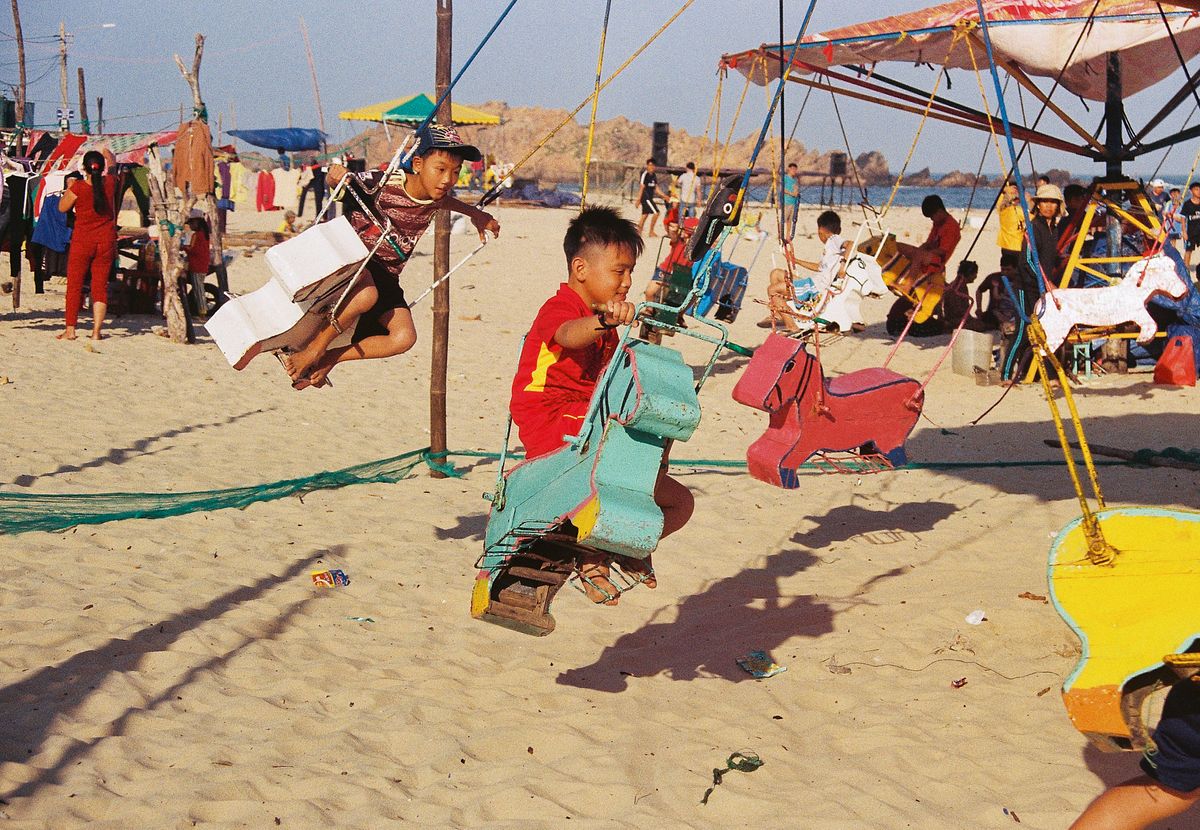Traveling south through central Vietnam by train can bring you to the familiar or the obscure: the Disney-fication of Hội An, the peaceful bays of Quy Nhơn, or the thrill of derelict spaces in Huế.
In any case, that journey often begins in the latter city. The area’s abandoned waterpark has, for many, already been seen. Yet in these images, we witness what’s often unobserved: curious, palm-leaf-hidden boys sneaking up old slides, their intrigue an echo of those enjoying the claustrophilia of infiltrating the park’s gigantic dragon head.

Exploring the abandoned water park.
Further south, the train hugs and then crosses highways, its open windows framing portraits of everyday life. Visiting Hội An, one sees arranged rows of uniform xích lô drivers, all seated in gleaming vehicles and wearing matching blue shirts and white hats. One is usual, two is coincidental; three is a consciously formed pattern.

Three drivers in Hội An.
More genuine scenes can be found in Quy Nhơn. During the golden hours, a lady hangs her washing in an alley beside Nhơn Hải Bay. The beach takes numerous forms: football pitch, playground, harbor, fisherman’s workplace.
Soft sand, bobbing coracles and the detritus of a community with almost nowhere to place their trash all feature. Yet even among the litter, there is a kind of lyricism — undulating fishing nets find their rhyme in the sea and sunlight moves in shallow water like fish scales.

Everyday life as seen through the window of a slow-moving train.

Entering the dragon's head in Hue's abandoned waterpark.

A train crosses a road before Hai Van Pass.

Curving Nhơn Hải Bay.

After school football on the beach.

Intense road rage.

Hung out to dry.

Coiled fishing nets.

Tangled teal nets.

A coracle-bobbing sea.
This article was originally published in 2019.
















